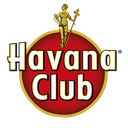Executive Secretary

IX International Symposium on Chemistry and Pharmaceutical Sciences
SIQF 2025
9th Symposium “Design, production and development of drugs” and 4th International Symposium “Chemistry of natural products”
Problem: Ravenia spectabilis is a promising plant in the pharmaceutical field due to its demonstrated antimicrobial and antioxidant activity in vitro. No studies have been described in Cuba that evaluate the chemical composition of the plant stem.
Objective: To evaluate from the phytochemical and analytical point of view the extracts obtained from the stem of Ravenia spectabilis with a view to their therapeutic use.
Methods: The phytochemical evaluation includes a qualitative screening of the possible metabolites in the different plant extracts. The identification of the main metabolites that contribute to the pharmacological actions of the plant was developed by means of Thin Layer Chromatography under different chromatographic conditions. The content of phenols and flavonoids was determined using techniques such as Folin-Ciocalteau and the AlCl3 colorimetric method, respectively.
Results: The presence of flavonoids, tannins, alkaloids and coumarins was detected by phytochemical screening. In Thin Layer Chromatography, the best results were obtained with the use of the mobile phase n-hexane-ethyl acetate-ammonia (76-26-10). The methanolic extract showed the highest total phenol content (895.2 mgEAG/gE) and the ethyl acetate extract the highest flavonoid content (764.6 mgR/gE).
Conclusions: The methanolic extract presented the highest total phenol content and the ethyl acetate extract the highest flavonoid content. Spots of metabolites were detected that could contribute to the pharmacological actions of the plant. The results obtained lay the foundations for research aimed at the development of new active ingredients for the pharmaceutical industry.
Problemática: Ravenia spectabilis es una planta promisoria en el campo farmacéutico debido a su demostrada actividad antioxidante y antimicrobiana in vitro. En Cuba no se han descrito estudios que evalúen la composición química del tallo de la planta.
Objetivo: Evaluar desde el punto de vista fitoquímico y analítico los extractos obtenidos del tallo de Ravenia spectabilis con vistas a su uso terapéutico.
Métodos: La evaluación fitoquímica incluye un tamizaje cualitativo de los posibles metabolitos en los diferentes extractos. La identificación de los principales metabolitos que contribuyen a las acciones farmacológicas de la planta se desarrolló mediante Cromatografía en Capa Delgada, bajo diferentes condiciones cromatográficas. La determinación del contenido de fenoles y flavonoides se determinó mediante técnicas como la de Folin-Ciocalteau y el método colorimétrico de AlCl3 respectivamente.
Resultados: Mediante tamizaje fitoquímico se detectó la presencia de flavonoides, taninos, alcaloides y cumarinas. En Cromatografía en Capa Delgada los mejores resultados se obtuvieron con el uso de la fase móvil n-hexano-acetato de tilo-amoniaco (76-26-10). El extracto metanólico presentó el mayor contenido de fenoles totales (895,2 mgEAG/gE) y el extracto de acetato de etilo el mayor contenido de flavonoides (764,6 mgR/gE).
Conclusiones: El extracto metanólico presentó el mayor contenido de fenoles totales y el extracto de acetato de etilo el mayor contenido de flavonoides. Se detectaron manchas de metabolitos que podrían contribuir a las acciones farmacológicas de la planta. Los resultados obtenidos sientan las bases para la investigación encaminada al desarrollo de nuevos principios activos para la industria farmacéutica.
About The Speaker

Melissa Lliliam Gómez Saucedo

Discussion


 Gold
Gold
 Gold
Gold
 Silver
Silver
 Silver
Silver